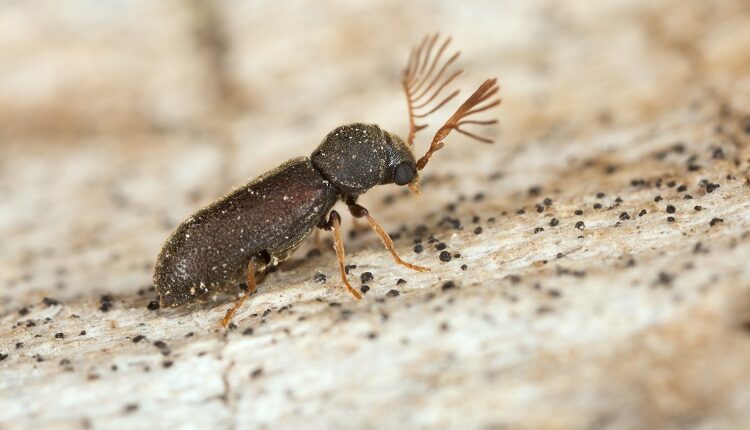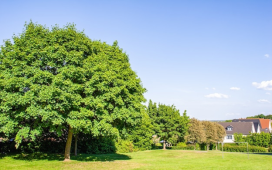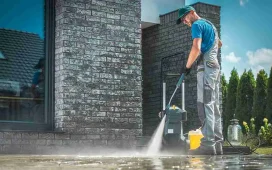Every home, whether big or small, has wooden furniture and structures that add charm. But wood-boring beetles can quickly ruin that beauty by digging holes and settling in. Yes, we are talking about those troublesome wood borers. If you do not act fast, these pests can damage your wooden items in no time. Spotting the early signs means it’s time to take action and protect your furniture and structures.
Spot the sneaky wood borers
These pests can be tricky, but they leave behind clear clues. Here are the key signs that wood borers might be making themselves at home in your wood.
Small holes in wood
If you see clean, round holes in your wood, scattered in several places, they’re probably exit holes made by adult wood-boring beetles. This usually means the wood borers have left, but your furniture or flooring might already be compromised. Spotting these holes in your wooden furniture, floors, or beams is your cue to jump into action!
Tunnels in the wood
If you can take a peek inside a piece of infested wood, you might find tiny tunnels weaving just below the surface. These crafty galleries are made by larvae as they munch their way through. Finding these tunnels is a red flag that the infestation is probably more serious than it seems.
Sawdust-like frass
Bore dust is the waste produced by wood borers during their larval and adult stages. It’s usually found in small piles near the holes or spread around the infested area. This is a clear indicator that the wood borers are active and need to be addressed immediately.
Weak or damaged wood
If your wood furniture is crumbling or your floorboards feel spongy, check for bore dust or exit holes. The tunnels made by wood borers can seriously weaken the wood inside.
Effective treatment methods
Once you have spotted a wood borer infestation, it is game on! Quick action is key to stopping further damage.
Borate products and insecticides
Borate and insecticide are highly effective in killing wood borers. While borate-based products contain chemicals that are lethal to pests like wood borers, most are safe for humans and pets. These products are typically applied directly to the wood, where they kill beetles as they soak in. Besides treating existing infestations, borate and insecticide can also help prevent future problems.
Wood preservatives
Another effective method is injecting wood preservatives directly into the infested wood. These chemicals kill the wood borers’ larvae and stop more from coming. This method is beneficial for treating valuable furniture, antiques, or structural beams because it keeps the wood looking good.
Fumigation
Fumigation is the big gun for tackling severe wood borer infestations. It involves sealing off the infested area and pumping in a gas that targets pests everywhere. These chemical fumes reach every corner, ensuring a thorough elimination. Just remember, pest treatment experts should handle fumigation, as it requires the right equipment and know-how to ensure it’s done safely and effectively.
Heat treatment
Heat treatment is a safe way to kill wood borers. It works by raising the wood’s temperature to a lethal level. This method is effective because wood borers cannot survive extreme heat. Professional pest control specialists can use specialised equipment to heat the wood evenly without causing damage.
Essential oils for a natural defence
Essential oils like clove, neem, and eucalyptus are like nature’s bouncers for wood borers. These oils mess with the pests’ life cycle, making your wood less inviting. Mix a few drops with water, spray it on the affected areas, and enjoy both bug protection and a refreshing, natural scent.
Stop wood borers before they startInspect regularly
Conduct regular inspections of your home, especially in areas with exposed wood. Look for the signs of wood borer activity mentioned earlier. Finding the problem early stops a small issue from becoming a big, costly one.
Opt for treated timber
When building or fixing wooden structures, go for treated timber. It is treated to keep wood-boring insects away, making it less appealing to them. This is especially important for outdoor structures like decks, fences, and sheds.
Store firewood properly
When storing firewood, make sure it is kept away from your home and raised off the ground. Wood borers often target firewood, and having it too close to your house can lead to an infestation spreading to your wooden structures. Use the firewood promptly to keep these pests from moving in.
Invite natural predators
Welcome natural predators like woodpeckers and parasitic wasps around your home. These creatures can help keep wood borer populations in check. Just remember, this approach works best when combined with other preventive measures for maximum effectiveness.
Seal cracks and holes to keep wood borers out
Kick wood borers to the curb by hunting down and sealing any cracks, holes, or gaps in your wood. Fixing these entry points stops them from sneaking in and laying eggs. Grab some wood fillers or sealants to block their way and keep your wood safe and sound.
Keep your home dry to deter pests
Wood borers are drawn to damp spots. So keep your home’s humidity in check to make it a no-go zone for these pests. Place dehumidifiers in moisture magnets like basements, attics, and crawl spaces to dry things out. Regularly inspect for leaks and ensure proper ventilation to keep your home dry and wood-borer-free.
In recap
A wood borer invasion may seem daunting, but you have everything you need to tackle it. Just follow these steps:
- Spot those early warning signs. Catching the problem early gives you the best chance to stop it before it escalates.
- Apply the right treatments. Using effective treatments ensures that you’re addressing the infestation at its source.
- Stay ahead with proactive measures. Taking preventative actions keeps future wood borer problems from taking root.
- Call professional pest control services. When in doubt, experts have the tools and knowledge to handle even the toughest infestations.











